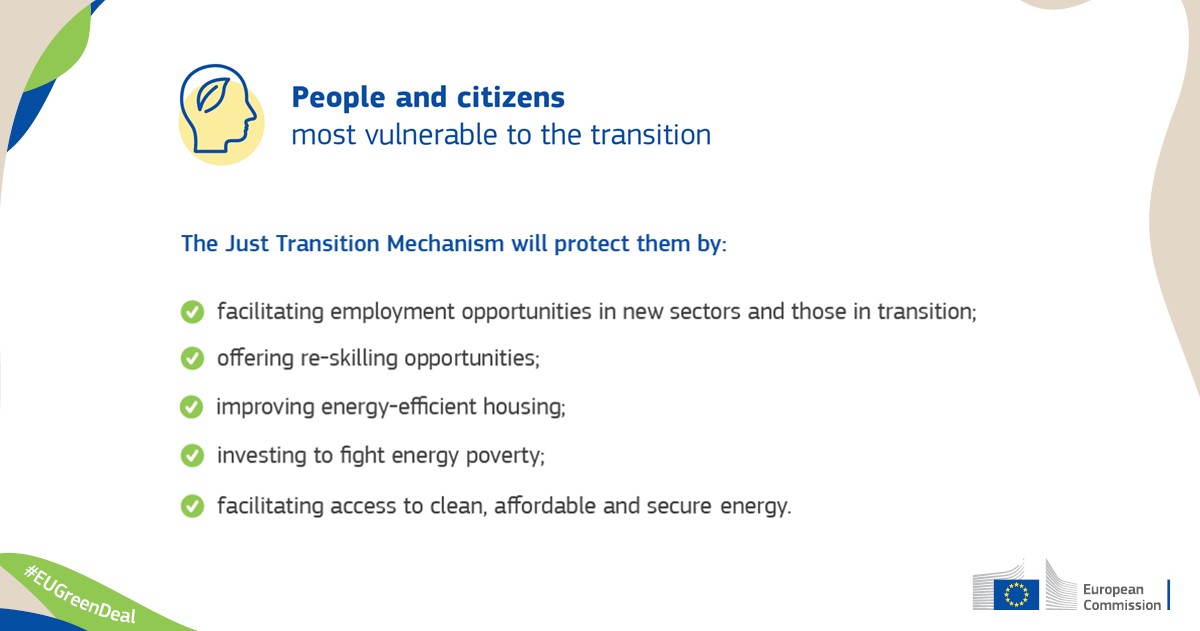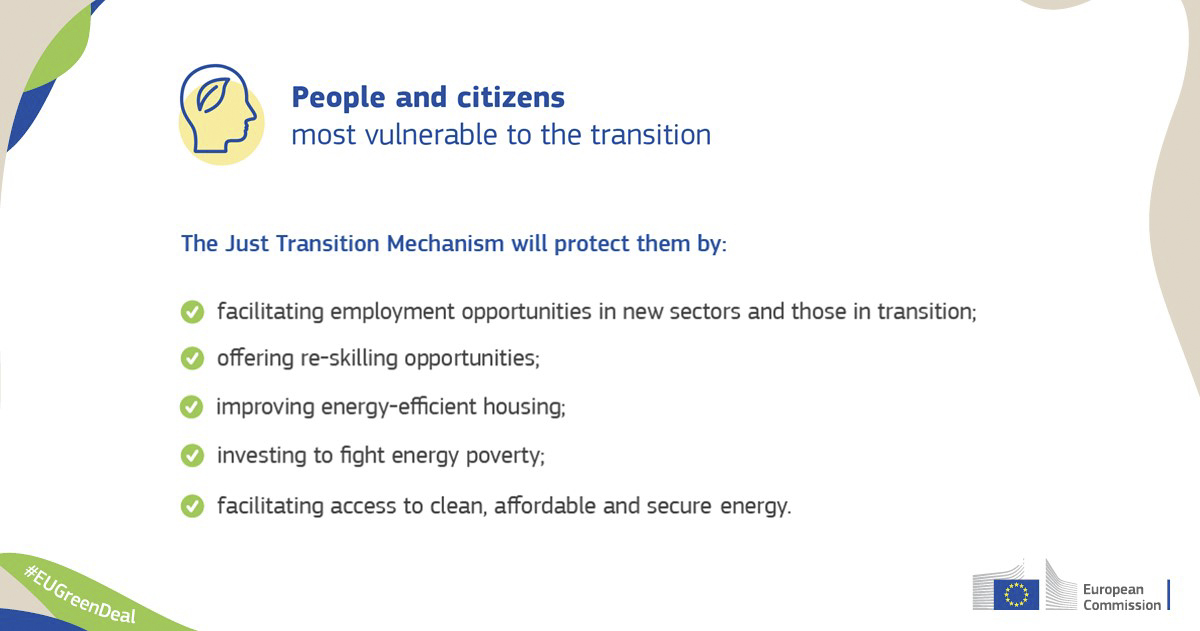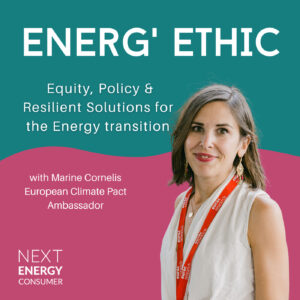The European Commission is putting the Green Deal ambitions on track. Europe aims at becoming the first “climate-neutral continent” by 2050, and this requires, of course, steady investments and the massive mobilisation of public and private resources. As announced in December, the Green Deal will have to have a robust social justice dimension to “leave no one behind”. In this context, the Commission has made clear that the “green transition must put people first, and pay attention to the regions, industries and workers who will face the greatest challenges”.
The verdict is indisputable. As the Yellow Vests reminded us, without the commitment of the people, it is impossible to build societies that are more resilient to climate change. Everyone needs to be on board to turn the constraints of transition into opportunities for economic and social development. Except that not all European territories are starting out with the same strengths and the same challenges, and not all people are equipped with the right tool and skills to deal with climate change. Some regions are still heavily dependent on fossil fuels and polluting industries, such as coal, as it is the case in Poland. Likewise, the workers in the territory of Taranto, in Puglia, in the south of Italy, heavily affected by the job cuts of the ex-ILVA steel plant, would be natural beneficiaries of the Just Transition Fund.
The Just Transition Mechanism, a combination of instruments in the Sustainable Investment toolbox
The Just Transition Mechanism (JTM) is part of the European Commission’s Sustainable Europe Investment Plan (SEIP) also called European Green Deal Investment Plan (EGDIP). It was set up to help Europe reach carbon neutrality by 2050. Over the next ten years, the Sustainable Europe Investment Plan will raise a total €1 trillion to support the energy transition across the 27 Member States, through the EU budget and associated instruments such as InvestEU.
The European Green Deal Investment Plan aims to increase funding for the transition, facilitate co-financing between private investors and the public sector in sustainable projects. To do so, the EC will “provide support to public administrations and project promoters in identifying, structuring and executing sustainable projects”. The plan will help heavily dependent countries phase out coal, ‘greenhouse gas-intensive activities’ and shale oil and achieve their climate objectives.

The Just Transition Mechanism aims to mobilise capital worth €100 billion, through grants, private investment and support from the European Investment Bank. The European Commission has calculated that “extrapolated over ten years, the Just Transition Mechanism will mobilise around €143 billion”. In practice, the JTM has been divided into three pillars:
- The Just Transition Fund implemented under shared management of the EU and the Member States;
- A dedicated scheme to build on private investments, part of the InvestEU Programme (2021-2027), more linked to infrastructures;
- A new public sector loan facility managed with the European Investment Bank Group to stimulate public financing and mobilise additional investments.
The Just Transition Fund will mostly provide grants to selected regions. €7.5 billion of “fresh money” will be brought to the fund. Additional financing will come from the European Regional Development Fund and the European Social Fund Plus, both part of the EU’s cohesion policy. The Commission expects Member States to match each euro from the Just Transition Fund with a minimum of €1.5 and a maximum of €3 from the European Regional Development Fund and the European Social Fund Plus (both belonging to EU budget). Besides, according to cohesion policy rules, these resources will be complemented by national co-financing.
Sewing environmental and social justice together: the Just Transition Fund and a Communication on a “Strong Social Europe”
The Just Transition Fund (JTF) is the “beating heart” of the Just Transition Mechanism. It focuses on the reconversion of the local economy, the adaptation of human resources and the inclusion of workers and job seekers in the territories most affected by the climate transition. The fund will have a significant impact on the fight against vulnerability, inadequate housing, energy poverty and mass unemployment. It will support projects related to the adaptation of skills and competences for the future, as well as the creation of local jobs. It will also support investments in the clean energy transition, such as in energy efficiency.

The Commission will help the Member States and regions prepare territorial Just Transition plans. National Energy and Climate Plans (NECPs) will be the starting points of local Just Transition plans. The territorial Just Transition Plans will identify the most affected territories, the ones that should benefit from the fund. The regional plans will set out the relevant local social, economic and environmental challenges and provide details on the necessary needs and measures for economic development, worker reskilling and ecological rehabilitation. A Just Transition Platform will be set up to generate the pipeline of projects in the regions most exposed to transition challenges.
Last but not least, the details of the Mechanism were presented on the same day as the Communication on a Strong Social Europe for Just Transitions (14 January 2020). This Communication on how to build a “fair, green and prosperous future” presents the first steps of an Action Plan to implement the European Pillar of Social Rights. It acknowledges the transformations at stake in the labour market and many pressing cross-sectoral and cross-border social issues.
The Communication rightfully says that “energy poverty and the difficulty in investing in modern cost-saving solutions point to the need to be vigilant on new distributional challenges brought by the transition to a carbon-neutral economy”. Therefore, presenting the Mechanism and the Communication on the same days is a clear sign that the EU is serious about sewing environmental and social justice together.
As several stakeholders have noted, the funds allocated are perhaps too modest to meet the climate ambitions of the von der Leyen Commission. But we can only welcome the coherence of the objectives to “leave no one behind” and bring more justice to the climate transition. It goes beyond silos and makes Europe a champion of the resilience of its citizens towards climate change. There is still a long way to go, but Next Energy Consumer is looking forward to this promising journey.



2 Responses